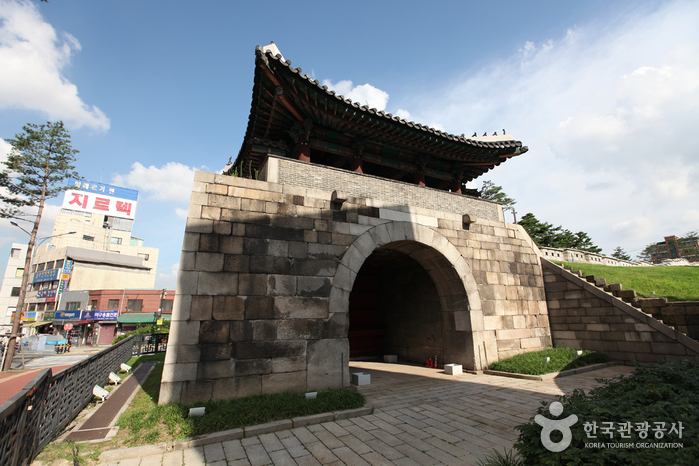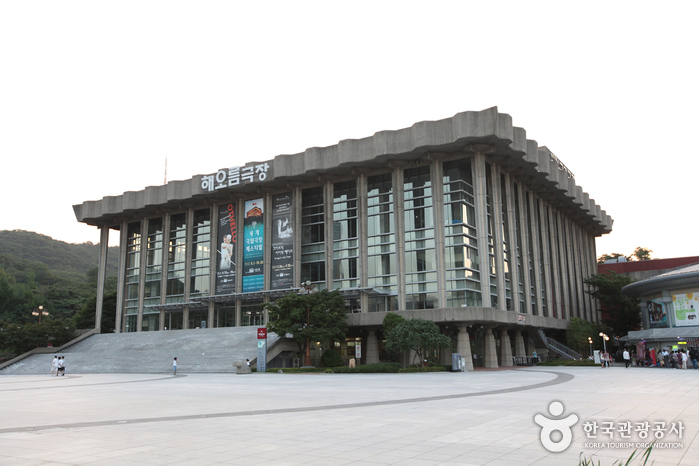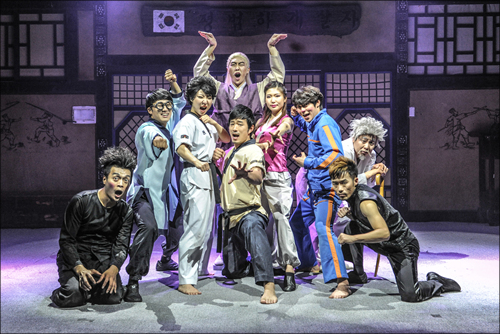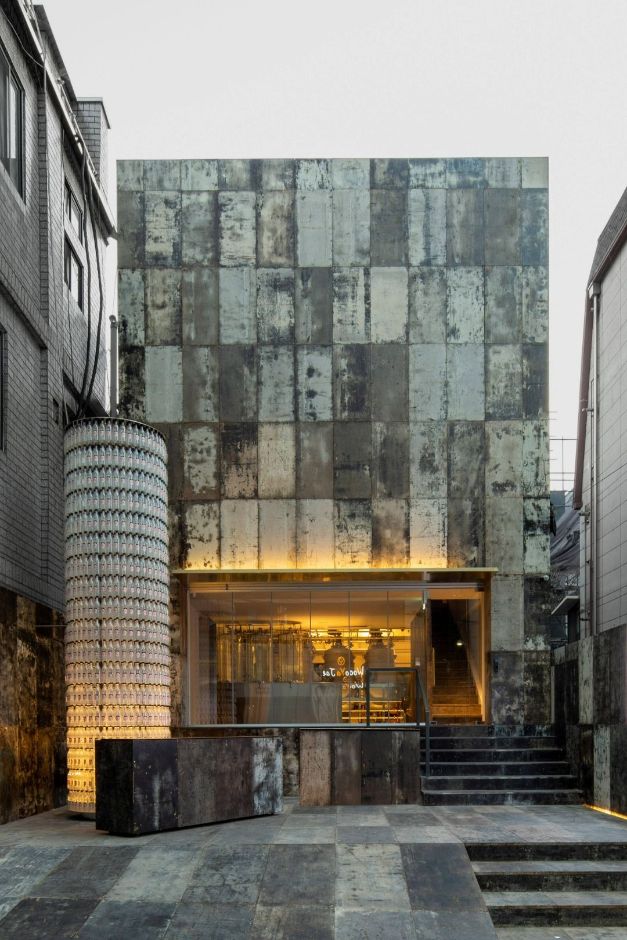Metro Spa Cabin (메트로 스파 캐빈)
586.7M 2024-12-17
217, Toegye-ro, Jung-gu, Seoul-si
+82-2-2277-8490
Metro Spa Cabin est un Jjimjilbang (Grand Spa ou sauna de style coréen) proposant un couchage dans des cabines privatives en bois comme type d’hébergement. Ces dernières sont emplies d’oxygène aux Ions negatifs et de Pitonchid (air de forêt naturel connu pour ses effets bienfaisants), permettant aux visiteurs de profiter pleinement d’un bain d’air pur dans un cadre boisé en plein coeur de la ville de Séoul. Les installations prévoient une capacité de plus de 200 cabines récentes.
La Maison de la Corée (한국의집)
675.0M 2024-02-07
10, Toegye-ro 36-gil, Jung-gu, Seoul-si
Situé dans le centre de Séoul, la Maison de Corée (The Korea House) constitue un site à ne pas manquer en tant que place multiculturelle offrant de la cuisine royale tout en proposant des spectacles traditionnels afin de montrer les charmes des traditions en Corée. La cuisne royale de la Maison de Corée est supervisée par le chef Han Bok-ryo, un grand expert dans le domaine dont le savoir-faire est considéré comme un patrimoine culturel de la Corée.
La Maison de Corée (한국의집)
675.0M 2024-02-07
10, Toegye-ro 36-gil, Jung-gu, Seoul
+82-2-2266-9101
Situé dans le centre de Séoul, la Maison de Corée (The Korea House) constitue un site à ne pas manquer en tant que place multiculturelle offrant de la cuisine royale tout en proposant des spectacles traditionnels afin de montrer les charmes des traditions en Corée. La cuisne royale de la Maison de Corée est supervisée par le chef Han Bok-ryo, un grand expert dans le domaine dont le savoir-faire est considéré comme un patrimoine culturel de la Corée.
Village Hanok de Namsangol (남산골 한옥마을)
737.8M 2025-06-20
28, Toegye-ro 34-gil, Jung-gu, Seoul-si
+82-2-2261-0500
Le village Namsangol a été fondé en 1998 et occupe une surface de 79,934m². Il comporte 5 hanok traditionnel, un espace pour l’artisanat traditionnel, un parc traditionnel, une oeuvre architecturale intitulée ‘Time Capsule’, le pavillon Cheonugak et le Centre de musique traditionnelle coréenne de Namsan. Ce lieu est connu notamment pour proposer des activités autour des traditions en Corée dans un quartier pourtant très moderne. Dans le point le plus haut du parc traditionnel, on trouve une place abritant l’oeuvre ‘time capsule’ créée en 1994 pour fêter les 600 ans de l’établissement de la capitale de Corée à Séoul.
Le village Namsangol et son ancien hanok rénové
Lorsque vous entrez dans le village Namsagol, vous aurez la possibilité de visiter l’étang Cheonghakji ainsi que la pavillon Cheonugak. Après avoir franchi la place du pavillon Cheonugak ainsi qu’un escalier en pierre, vous pourrez apprécier un espace traditionnel typique de Corée rénové pour l’occasion et qui constitue sans doute le point d’orgue de Namsangol. Cet espace est composé de 5 hanok : La maison Lee Seung-eop, la maison Kim Chun-yeong, la maison Kwan Hun-dong, la maison Yun-ssi et la maison Yun Taek-yeong (ces maisons datent de la seconde moitiè du 19ème siècle). Ces maisons qui étaient réparties dans différents quartiers de Séoul ont ainsi été réunies dans cet espace à l’exception de la maison Yun-ssi dont l’état n’avait pas permis son transfert et qui fut donc en grande partie restaurée sur place.
Une multitude d’activités au village Namsangol
Le village Namsangol permet aux visiteurs de profiter d’activités en lien avec les traditions en Corée via des espaces aménagés notamment à l’intérieur des 5 différents hanok. Il est par exemple possible d’essayer le hanbok, le papier coréen hanji, l’écriture coréenne ‘hangeul’, ou encore de déguster le thé traditionnel. Le lieu abrite également une école des politesses et saluation traditionnelles et un espace d’activités autour de la médecine coréenne. Durant les weekend, il est aussi possible d’assister à des cérémonies de mariage traditionnel. Des démonstrations d’artisanat avec de la paille sont aussi disponibles devant le pavillon Cheonugak tout comme des séances d’initiation de taekwondo. Divers jeux folkloriques sont aussi disponibles ce qui en fait un lieu apprécié notamment par les familles. Enfin, les visiteurs peuvent aussi bénéficer d’explications de guides sur place sur le patrimoine culturel de Corée au village Namsangol.
Porte Gwanghuimun (광희문)
795.9M 2021-02-24
344, Toegye-ro, Jung-gu, Seoul
+82-2-3700-3900
La légende raconte que la porte Gwanguimun fut construite en 1396, lors de la 5ème année du règne du roi Taejo, au Sud-Est de la capitale (Séoul). Elle fut souvent appellée ‘Porte Sugumun’ (canal) et fut d’ailleurs utilisée en tant que Sigumun, signifiant littérallement “porte des corps”, puisque les processions funéraires passaient par cette porte quand elles se dirigeaient à l’Est.
Durant la guerre Imjin (invasion Japonaise de la Corée, 1592-1598), la porte de la forteresse fut détruite à tel point qu’il fut ensuite quasi impossible de retrouver son emplacement exact. Néanmoins, les efforts de reconstruction ont été entrepris en 1711 (37ème année du règne du roi Sukjong), le canal fut restoré et une tour construite. Le porte Gwanghuimun est par la suite restée intacte, même lorsque les murs de la forteresse furent démolis pour la construction de rails de tramway durant la rège coloniale japonaise. Elle fut cependant largement abîmée pendant la guerre de Corée puis laissée en ruine. En 1975, des travaux de resturation furent entrepris afin de relocaliser la porte à 15m de son emplacement d’origine, dans une optique de dégager le milieu de la route.
Théâtre national de Corée (국립중앙극장)
899.7M 2021-07-13
59, Jangchungdan-ro, Jung-gu, Seoul-si
+82-2-2280-4114
Le théâtre national de Corée s’est ouvert en 1950, c’était alors le tout premier théâtre national en Asie. Actuellement il est le siège de quatre compagnies : la compagnie nationale de théâtre, la compagnie nationale Changgeuk, la compagnie nationale de danse et la compagnie de l’orchestre national. Le théâtre se divise en quatre salles, dont la plus grande est la salle Haeoreum. Elle possède une capacité de 1500 sièges et des équipements d’éclairage et de son modernes. L’espace prévu entre les sièges et le plus large de tous les théâtres du pays et permet un comfort inégalé. Daloreum, la plus petite des salles contient 450 sièges. Le répertoire qui y est joué est permanent. La salle Byeoloreum situé dans un bâtiment annexe est unique car sa scène et ses sièges sont adaptables aux différents type de spectacle. Tous les équipements y sont démontables et sa capacité est de 100 places. C’est la salle dédiée aux spectacles expérimentaux ou d’avant-gardes, on la réserve aussi pour les spectacles uniques. La salle est dotée d’un équipement son dernier-cri et d’un système d’éclairage portable. Les concerts en plein air et les festivals déstinés pour les jeunes se tiennent là.
Le théâtre national abrite de nombreuses installations pour le confort du spectateurs, si vous souhaitez obtenir des informations sur les spectacles et l’achat des billets rendez-vous au centre d’information aux clients, au rez-de-chaussée (salle Haeoreum).
Au premier étage se trouve une salle d’exposition présentant différents costumes et accessoires de théâtre. On peut ainsi y voir l’histoire du théâtre coréen.
Au sous-sol se trouve 'Jihwaja' un restaurant de cuisine de palais, 'The Sun and the Moon' un restaurant coréen de style fusion, et un hall pour les réceptions après les concerts. Le hall offre une vue magnifique sur Namsan, pensez donc à y passer.
Jump (점프)
914.1M 2025-03-13
47, Mareunnae-ro, Jongno-gu, 100-300 Seoul-si
• Centre d'appels 1330 : +82-2-1330 (coréen, anglais, japonais, chinois) • Pour obtenir plus d'info : +82-2-722-3995 (anglais)
Depuis ses débuts en Coréen en juillet 2003,
Ce spectacle innovateur incorpore de nombreux arts martiaux asiatiques comme le taekwondo et le taekkyeon coréens. Il relate l'histoire d'une famille de spécialistes en arts martiaux qui doivent défendre leur maison face à des cambrioleurs.
Myeongbo Art Hall (명보아트홀)
916.2M 2025-04-18
47, Mareunnae-ro, Jung-gu, Seoul, Republic of Korea
서울의 중심 을지로3가에 위치한 명보아트홀은 반세기의 전통과 명성을 가진 (구)명보극장을 리모델링하여 2008년 재개관하였으며, 현재는 전문공연장으로 이루어진 복합문화공간이다.
1957년 현대 문화의 대표적인 발상지로서 개관한 (구)명보극장으로 시작하여 글로벌 복합문화공간 도약의 비전을 목표로 세계적인 문화 콘텐츠 개발과 보급에 힘쓰고 있는 명보아트홀은 국내 대표 공연관광의 랜드마크가 되고자 기업과 문화의 융합을 바탕으로 상생의 새로운 사업모델을 구축하기 위하여 꾸준히 정진하고 있다.
Située au coeur de Séoul, dans le quartier de Euljiro 3-ga, Myeongbo Art Hall possède une riche histoire et une réputation bâtie au fil de plus d'un demi-siècle. Autrefois cinéma Myeongbo, le bâtiment a été rénové et rouvert en 2008. Il est aujourd'hui devenu un complexe culturel composé principalement de salles de spectacles professionnelles.<br>
Ouvert en 1957, l'ancien cinéma Myeongbo a joué un rôle emblématique dans le développement de la culture moderne en Corée. Issu du cinéma Myeongbo d'origine, Myeongbo Art Hall poursuit aujourd'hui une vision de développement en tant que complexe culturel global, en s'efforçant de créer et de diffuser des contenus culturels de portée internationale.<br>
Il s'affirme comme un espace artistique où coexistent tradition et modernité, et tend à devenir l'un des complexes culturels les plus emblématiques ainsi qu'une destination touristique majeure de Séoul.
Geumdwaeji Sikdang (금돼지식당)
934.3M 2024-10-30
149, Dasan-ro, Jung-gu, Seoul
Geumdwaeji Sikdang est réputé comme l'un des meilleurs restaurants de plats de porc à Séoul et propose des plats typiques comme le Bonsamgyeop.
Brasserie de makgeolli Chunpoong
1.0Km 2025-02-05
서울특별시 중구 다산로 101-3 (신당동)
C'est une brasserie qui produit le makgeolli, la base de l'alcool coréen. Des visites et des sessions de dégustation sont organisées pour transmettre la valeur de l'alcool coréen. Nous fournissons des informations détaillées sur le makgeolli, qui est en train de disparaître de l'histoire, et faisons découvrir ce précieux patrimoine culturel coréen aux Coréens et aux touristes étrangers. De plus, un espace de restauration séparé est aménagé pour profiter de la nourriture et de l'alcool. Le rez-de-chaussée est composé de la brasserie et du dépôt de makgeolli, tandis que le premier étage est aménagé en salle de dégustation et en média top. Le deuxième étage est dédié à l'exposition d'œuvres de membres de l'Association culturelle de l'artisanat de la dynastie moderne, présentant le patrimoine culturel immatériel national et fonctionnant comme une galerie pour introduire le patrimoine culturel coréen. En face de la brasserie, 'Chunpoong Jeonjit' est exploité, vendant des 'jeon', un plat emblématique de la Corée, ainsi que des aliments de saison en petites portions.





 Français
Français
 한국어
한국어 English
English 日本語
日本語 中文(简体)
中文(简体) Deutsch
Deutsch Español
Español Русский
Русский